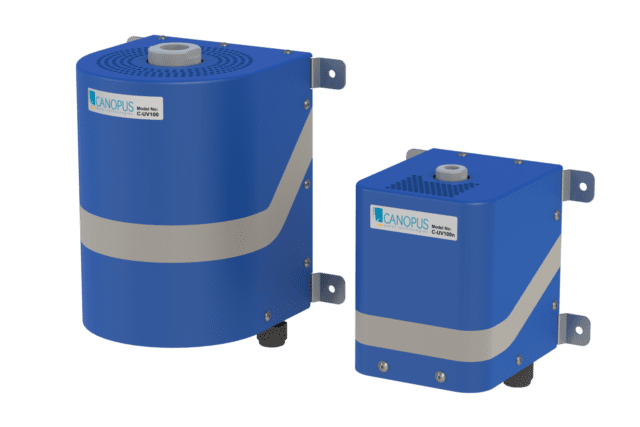
16 Dec FAQS on our water purification system
Do I really have to worry about bacterial contamination in my water if I am on a municipal water supply?
Cases of infections from a waterborne pathogen are on a sharp rise in the United States lately for multiple reasons. For example, cases of Legionnaires disease caused by the Legionella bacteria in water increased from 0.5 case per 100,000 in 2000 to 2.5 per 100,000 in 2017. Similarly, cases of Salmonella and E-coli infections are increasing.
How do I know if my water is contaminated?
Usually regular testing is recommended, however, while in few cases contamination is known and present and treatment is required. In most cases these contaminations appear unannounced and quickly spread and adding a UV system is the low-cost approach to ensure prevention against such outbreaks. Test strips are available.
What does this device do?
The C-UV100 is a water disinfection or purifying product. It eliminates most biological and microbial contaminants in water such as bacteria (E-Coli, Coliform, Legionella, Salmonella), viruses (Rotavirus, Hepatitis A, Polio) and cysts (Giardia, Cryptosporidium and Microsporidia).
How does it work?
Ultraviolet (UV) light has been proven to be a potent non-chemical disinfectant. In the germicidal range or UVC, the photon is highly energetic and coincides with the DNA’s peak absorption. DNA is a well-organized structure that carries the genetic code of any living organism, hence, subjecting it to UVC radiation will disrupt its structure and cause all information about the organism to be lost, it will prevent it from multiplying and weakens it. As a result, water is sanitized to the highest standards without the addition of potentially harmful chemicals.
There are many UV systems in the market, what makes the C-UV100 unique or revolutionary?
Current UV systems use long lamps like neon lights filled with Mercury Vapor to generate the appropriate UV wavelength. Mercury presents a significant health hazard making the yearly lamp replacement a risky adventure. The C-UV100 on the other hand uses a new type of LEDs that emit in the germicidal range. LEDs are solid-state and can be discarded just like any electronic device. In addition to the inherent safety of the UltraV, other benefits such as energy efficiency is significant. The UltraV uses as low as a tenth the energy used by some Mercury based products. It also safer and more reliable since there is no high voltage ballast and no sleeve to clean
How different is it from regular filters such as carbon filters?
Filters are physical or mechanical barriers that block the flow of contaminants in water such as lead, arsenic, fluoride, and organic compounds. While filters block all these contaminants and improve the taste of water, they fail to remove biological contaminants such as bacteria. Typical pore size for common drinking water filters is 5 microns (1 micron is one millionth of a meter), a bacterium can be less than a micron in size while a virus can be as small as a tenth of a micron.
How about Reverse Osmosis (RO)?
Reverse osmosis is a type of filtration that replies on a membrane with small pores to purify water. Because pore size is small, water flow through such systems is low and therefore requires a holding tank while the water with the pollutants is flushed away. Typical RO system recovers 15 to 20% of the water.
RO systems are very popular due to their effectiveness in removing heavy metals and other chemicals and because they are paired with Activated Carbon filters to improve the taste and color of the water. However, they are bulky and waste a significant amount of water. Furthermore, residential and low cost RO systems fail to remove bacteria and viruses, however, they can be an excellent complement to UV systems.
How easy is it to install?
As described in the user guide, there are no special requirements for installation. It is a simple process of plumbing of the water inlet and outlet and the power plug.
How about maintenance?
Like installation, maintenance is extremely easy. Replacing the LED requires the removal of a cover plate which is attached by two Allen type screws. As shown in the instruction, after the removal of the screws, the old LED is detached and the new one plugged in, then replaced in the unit.
How often should I replace the LED assembly?
Yearly.



Sorry, the comment form is closed at this time.